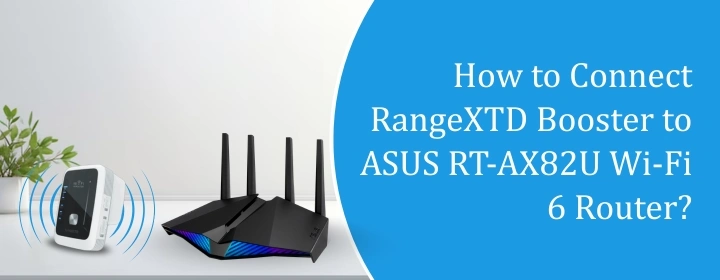
How to Connect RangeXTD Booster to ASUS RT-AX82U Wi-Fi 6 Router?
Boosters are made to connect with any type of router which boosts their signals in your home every corner. Here we will provide guidance with how to connect RangeXTD booster to Asus RT-AX82U router via different methods like RangeXTD setup page or WPS. So, let’s dive in.
Check ASUS RT-AX82U WiFi Router Settings
To check up all the settings are reliable for the RangeXTD booster connection, you need to go into the interface of the router, these are some of the steps to access the interface.
- Log in: Open up a browser, punch in 192.168.50.1 (or 192.168.1.1 if you haven’t changed anything). Username/password is whatever you set, otherwise it’s the default (admin/admin)
- Dashboard view: Once you’re in, you’ll land on the “Network Map.” This is the quick overview. Shows your internet status, connected clients, etc. Honestly, half the time I just sit there staring at which random device is chewing bandwidth.
- Wireless settings: Go left side menu > Wireless. Here’s where you can tweak the SSID (that’s your WiFi name), passwords, channel, 2.4GHz vs 5GHz stuff. If your WiFi is being weird, check what channel you’re on — set it to Auto first, but sometimes locking it down to 1, 6, or 11 (for 2.4GHz) fixes interference issues.
- AiMesh / AiProtection: AiMesh is only useful if you’ve got another ASUS router. AiProtection is basically Trend Micro baked in. Worth enabling if you’ve got non-tech family members clicking garbage links.
- QoS (Quality of Service): This one’s under “Adaptive QoS.” If your gaming pings slow, flip this on and prioritize gaming or specific devices. Don’t go crazy though – QoS can sometimes cause more headaches than it solves if you misconfigure it.
- Administration: Down the left, bottom area. This is where firmware updates hide. Always check for updates here, because ASUS pushes bug fixes but doesn’t always tell you unless you go looking.
Connect RangeXTD Booster to ASUS RT-AX82U Router
There are two methods that you can use to make a connection between your router and RangeXTD booster:
Via WPS
- Plug the booster in. Doesn’t matter where at first, just plug it close to the router so they can actually talk. Later you can move it to wherever you need signal.
- Find the WPS button. On the RangeXTD, it’s the big obvious button on the front. On the ASUS RT-AX82U, the WPS button is on the back.
- Press the booster button first. Hold it down for about 2-3 seconds until you see the WPS light start flashing. That means it’s searching.
- Jump to the router. Within like 2 minutes, press and hold the ASUS WPS button for 2 seconds. The WPS LED on the router will start blinking too.
- Wait. It doesn’t happen instantly. Took mine about 45 seconds before the booster light stopped blinking and went solid. When that happens, they’re paired.
Via interface
To get into the RangeXTD, connect to its temporary Wi-Fi. It shows up as something like “RangeXTD-Setup” when you scan.
- Connect, then open a browser and go to 192.168.7.234. That should pull up its little web interface. RangeXTD Login is usually admin/admin.
- Inside, pick “Repeater Mode.” Don’t bother with the other modes unless you’re doing something fancy.
- It’ll scan for networks. Find your ASUS router’s SSID (again – pick the 2.4 one). Enter your Wi-Fi password.
- Save, let it reboot, and then it’ll create a clone network usually your SSID with _EXT on the end. You can rename it in the booster settings if you care, but I just left it.
- Once it’s broadcasting, unplug the RangeXTD and move it halfway between the router and your dead zone.
- That’s the sweet spot – too close to the router and it doesn’t help, too far and it won’t catch a strong enough signal.
Final step: reconnect your devices to the new extended SSID and test speeds. Don’t expect miracles – it’s still a budget extender. But if all you need is signal upstairs for browsing or streaming, it does the job.
The Conclusion
Hope this how to connect RangeXTD booster to Asus RT-AX82U router guide help you and you are now connected with the boosted network in your home.